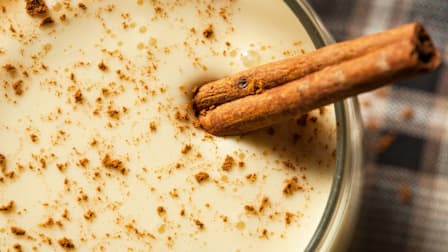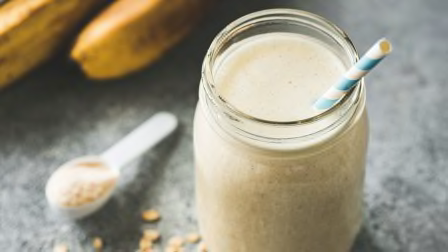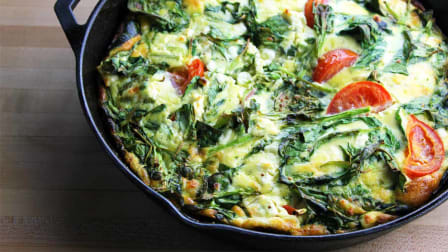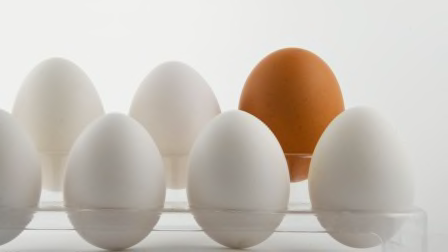Is Iced Tea Good for You?
This summer favorite may be refreshing, but it's not always so healthy. Here are better choices.
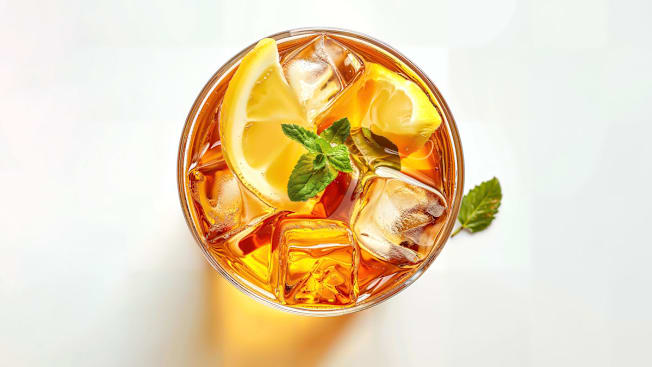
Hot days and cool, crisp iced tea seem like a match made in heaven. And plenty of people agree.
According to the Tea Association of the USA, Americans consumed nearly 4 billion gallons of tea in 2023, and 75 to 80 percent of it was iced tea.
Freshly made iced tea can have many of the same health benefits as hot tea, namely the potential to improve heart health and lower the risk of conditions such as cognitive decline and diabetes. The same can’t be said for many bottled iced teas.
"In order to have these beneficial effects, the tea you’re drinking must be high in antioxidants," says Joe Vinson, PhD, professor of chemistry at the University of Scranton in Pennsylvania. "And there’s no way of knowing what you’re actually getting when you buy iced tea in a bottle."
What’s more, many bottled iced teas are nutritionally on a par with soda—complete with loads of added sugars, and artificial colors and flavors.
That’s not to say a ready-to-drink iced tea is never a good choice. Some bottles are better than others, and, as always, it pays to read the nutrition label to find the best options.
Here’s what to consider before choosing a bottle of iced tea.
Beware of Added Sugars
"You may think you’re choosing a healthier option when you grab a bottle of iced tea instead of a soda, but in many cases, you’re getting about as much or more sugars," says Amy Keating, RD, a nutritionist at Consumer Reports.
Don't Count on Getting Antioxidants
If part of the reason you drink iced tea is to get a daily dose of antioxidants, be warned that there might not be many in a bottle.
"Bottled teas are very low in antioxidants compared to freshly brewed tea," says Vinson, whose lab has analyzed a variety of teas.
In his testing, black tea bags steeped for 5 minutes in hot water contained the highest amount of antioxidant polyphenols—600 mg per cup—compared with bottled black tea, which contained just 68 mg per cup.
Vinson theorizes that the ratio of water to tea is higher in bottled teas than in tea you make at home, so the resulting beverage has a lower antioxidant level. Flavorings and sugars eliminate tea’s naturally bitter taste but may also dilute antioxidants.
Don't Think Green Is Better
There are many things to like about green tea. Some research suggests that the type of antioxidant in green tea called epigallocatechin gallate (EGCG) may help lower the risk of certain cancers and reduce the risk of heart disease.
But don’t be blinded by green tea’s health halo. Many bottled green teas—just like bottled black teas—are loaded with added sugars. For example, an 18.5-ounce bottle of Gold Peak Green Tea has 38 grams of added sugars and 150 calories.
Know How to Decode Labels
Claims on iced tea bottles can make you think that the product is healthier or better in other ways, but it pays not to take them at face value. Here’s what a few of the most common terms you see really mean.
Tad sweet or slightly sweet: These unregulated terms are open to the manufacturer’s interpretation. Usually, it means that the tea has less sugar than a similar product from the same brand, but the amounts vary from brand to brand. The teas with this claim that we looked at contained anywhere from 5 to 25 grams of added sugars per bottle.
No artificial sweeteners: The tea may still contain sugar, stevia, sugar alcohols like erythritol, or a combo. For example, Pure Leaf Honey Green Iced Tea carries this claim and has 25 grams of sugar per 18.5-ounce bottle (from sugar and honey), as well as stevia extract. This sweetener is thought of as “natural” (vs. artificial), but while it comes from a plant, getting the extract requires processing in a lab.
No sugar, sugar free, or zero sugar: By law, the product must have less than 0.5 gram of sugars per serving. Teas with these claims may still contain a sugar substitute, such as sucralose, so check the ingredients label.
Fair Trade Certified: Farmers who grow crops (like tea or sugar) used in the product must pay workers at least the local minimum wage, provide safe working conditions, and more. This claim is verified, but it may apply to just a single ingredient, say, the tea and not the sugar.
Rainforest Alliance Certified: This means that some or all of the tea is sourced from farms that have met standards promoting sustainability and protecting farmers, forests, wildlife, and local communities.
Consider Brewing Your Own Iced Tea
It will cost less, and you can control the amount of added sugars it contains. Or skip the sugar entirely and add a splash of fruit juice or a purée of fruit (like peaches or raspberries). Herbs and spices such as mint, basil, cinnamon, and ginger can also add a depth of flavor to the tea.
Making iced tea is simple. You can pour boiling water over a tea bag or loose-leaf tea (black or green), allow it to steep for about 5 minutes, and let it cool in the refrigerator. (To make a pitcher, steep eight to 10 tea bags in 2 quarts of water, then refrigerate.) You can also add tea to cold water and let it steep for about 2 hours. A 2016 study published in the Journal of Food Science found little difference in the polyphenol content of black or green tea steeped in hot water for 5 minutes vs. cold water for 2 hours. However, using hot water may result in a stronger brew.
It’s worth noting, though, that the antioxidants in tea will dissipate over time. "We found that once brewed, the antioxidant content went down about 10 percent a day," Vinson says. So don’t brew up a bigger batch than you can drink in a day or two.

















